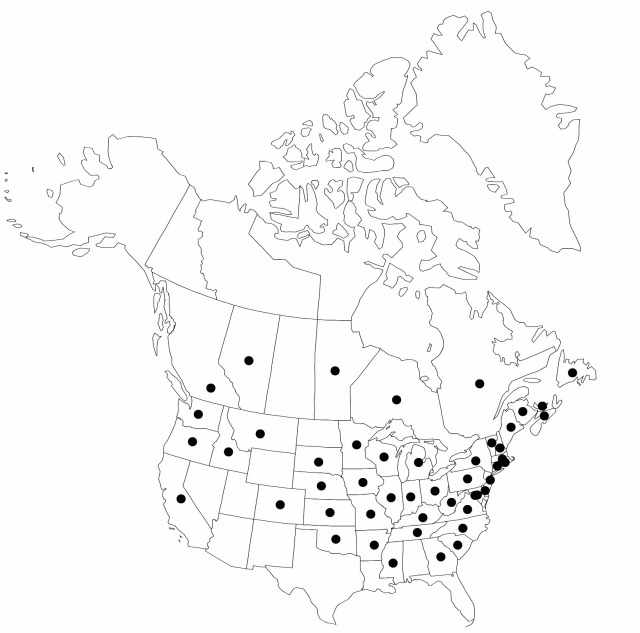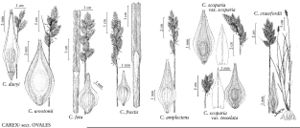Carex scoparia var. scoparia
Inflorescences dense to open, 1.5–6 cm; spikes densely aggregated to distant. Pistillate scales golden brown or pale, sometimes darkened when mature. Perigynia pale or golden-brown, similar in color to pistillate scales and beaks, lanceolate to elliptic, 4.2–6.8 × 1.2–2 mm, (2.5–) 2.8–4 times as long as wide. 2n = 56, 58, 60, 68.
Phenology: Fruiting late spring–summer.
Habitat: Wet to dry, open habitats, usually on acidic, often sandy soils
Elevation: 0–2000 m
Distribution

Alta., B.C., Man., N.B., Nfld. and Labr. (Nfld.), N.S., Ont., P.E.I., Que., Ark., Calif., Colo., Conn., Del., D.C., Ga., Idaho, Ill., Ind., Iowa, Kans., Ky., Maine, Md., Mass., Mich., Minn., Miss., Mo., Mont., Nebr., N.H., N.J., N.Y., N.C., Ohio, Okla., Oreg., Pa., R.I., S.C., S.Dak., Tenn., Vt., Va., Wash., W.Va., Wis.
Discussion
Some populations of Carex scoparia from the central and southern Appalachian Mountains have unusually long beaks (greater than 3.7 mm). When long beaks occur in more robust plants with large spikes and spreading perigynia, the plants look remarkably different from typical lowland or western populations.
Carex scoparia var. scoparia grows syntopically with other species from sect. Ovales and may form sterile hybrids. P. E. Rothrock et al. (1997) documented putative hybrids between C. scoparia and C. alata, C. hormathodes, C. straminea, and C. suberecta.
See note under 146. Carex longii.
Selected References
None.
Lower Taxa
"shortened" is not a number."+timesaslongasinflorescences" is not declared as a valid unit of measurement for this property."not undefined" is not a number."shorter and narrower" is not a number.
